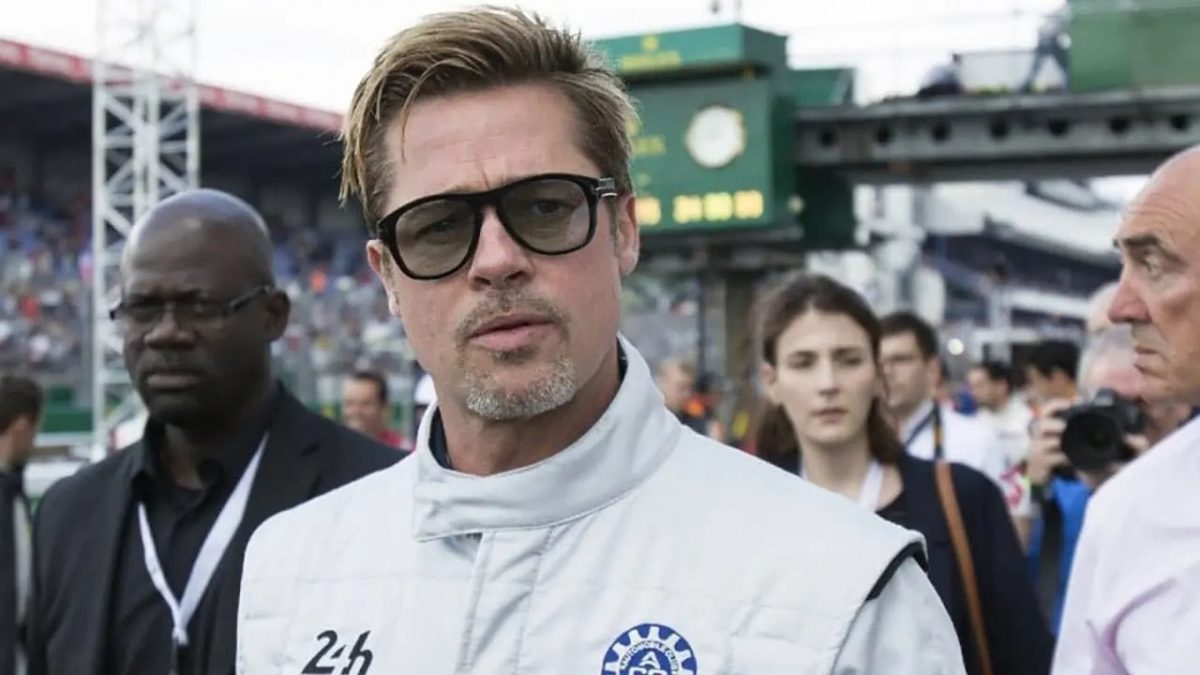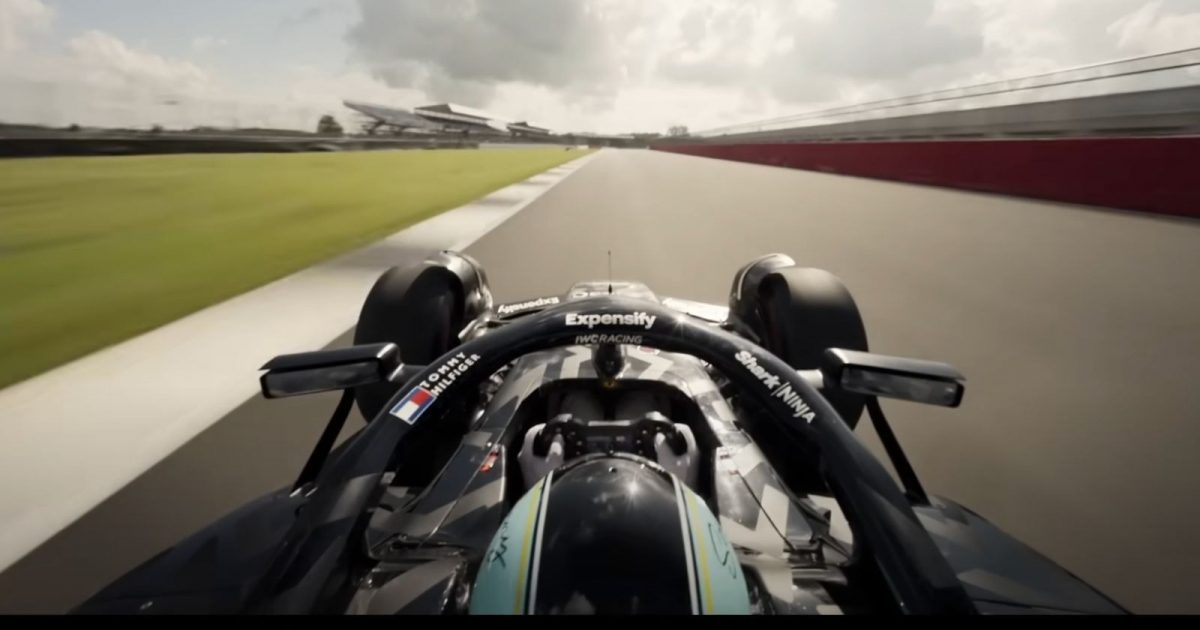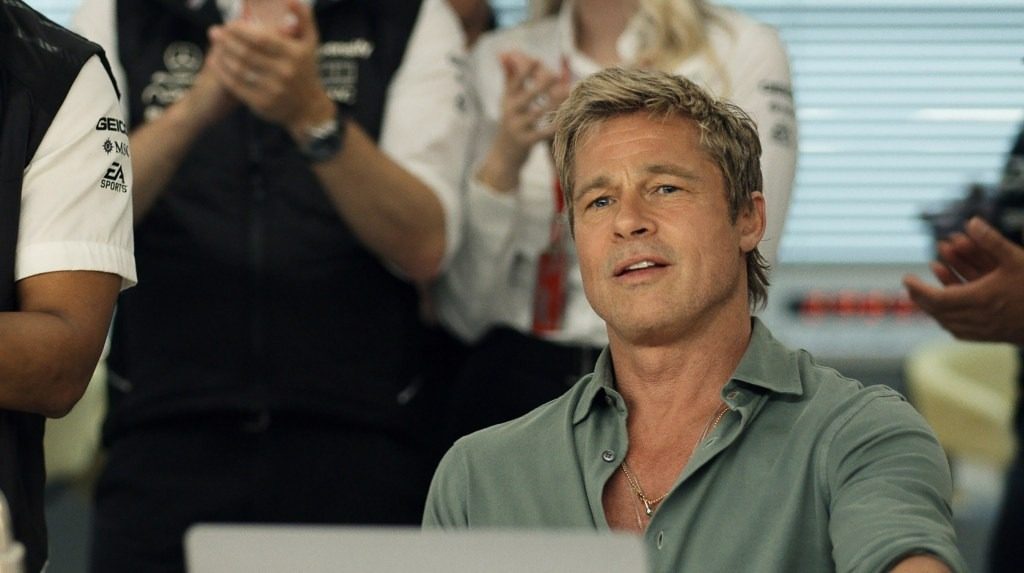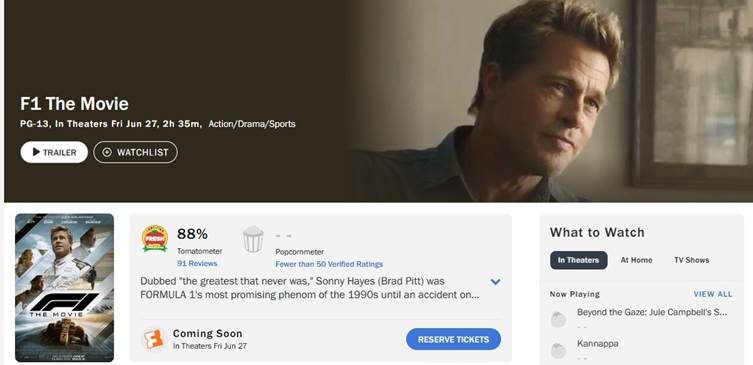When Racing Becomes a Cinematic Stage for High Definition
When it comes to racing films, many viewers often hesitate: the speed, the noise, the techniques… everything seems too harsh and hard to access. However, “F1” – the latest blockbuster from director Joseph Kosinski and starring Brad Pitt – has shattered that perception with an immersive cinematic experience that is both entertaining and deeply emotional. Produced by Warner Bros. and Apple Studios, “F1” is not just a film for Formula 1 fans; it is a heartfelt tribute to the racing world, the camaraderie, and the struggle to rise above the challenges.

The cinematic language of racing films – notably characterized by a raw, visceral feel – has been shaped over the years. Anyone who has watched “Grand Prix” (1966) still remembers the thrill of speeding down the racetrack through stunning visuals. Following that was “Le Mans” (1971), and then “Mad Max” – a film that, while not primarily about racing, resonated with its intense action and realism. These films have set the foundation for how we perceive the fiery twists and unique characteristics of racing drivers as a metaphor for life’s challenges.

With “F1”, Joseph Kosinski – who previously captivated audiences with “Top Gun: Maverick” – continues to explore “the art of speed” with cutting-edge visual techniques. Collaborating with Oscar-winning cinematographer Claudio Miranda, Kosinski creates a racing environment that feels palpably real. From high-speed maneuvers exceeding 200 mph to the vibrations of the steering wheel, “F1” allows viewers to feel as if they are in the driver’s seat, experiencing the roar of the engine and the adrenaline pumping through their veins with every turn.

The standout feature of “F1” is undoubtedly its perspective – dynamically blending real driving with virtual experiences. The viewpoint feels akin to a VR game, where every drift along the edge of the track, the sounds of tires screeching, and the tension amplify the audience’s experience from merely “watching” to truly “living” through each gear shift and turn. The soundtrack by Hans Zimmer – who previously set the tone for adrenaline-pumping experiences in “Days of Thunder” – continues to enhance the emotional depth, elevating every frame to an exhilarating EDM-infused crescendo.
Brad Pitt and the Spirit of Racing
In terms of narrative content, “F1” is not overly complex; however, its focus on character development helps evoke profound emotions. The film centers around Sonny Hayes – a racing driver (played by Brad Pitt) who once soared to glory but faces challenges after a catastrophic accident. Now in his middle age, Sonny is pulled back into a world of racing while grappling with the wreckage of his past. The storyline feels familiar – a protagonist fighting to reclaim his legacy – yet Brad Pitt’s nuanced performance brings depth to Sonny, who is continually haunted by his past failures while striving for redemption.

Pitt – both the producer and lead actor – does not merely “act” but embodies the character in a way that feels authentic. As a long-time racing enthusiast, Pitt drives genuinely in many scenes, immersing himself in the role with a natural ease. Behind the sleek exterior lies a troubled past – a Sonny who has faced failures, yet retains an undeniable passion and spirit that defines a seasoned racing driver.
One particularly contentious detail is the film’s use of real footage from the 1990 crash of driver Martin Donnelly to illustrate Sonny’s dark past. While it may be jarring for some viewers, it does serve to highlight the inherent dangers of racing and the weight of Sonny’s journey in “F1”.
“F1” also features a strong supporting cast. Javier Bardem as Ruben – Sonny’s long-time friend and mentor – adds depth and complexity to their relationship, creating a dynamic that is both supportive and challenging. Damson Idris – portraying Joshua Pearce – represents the new generation: talented and ambitious, yet still needing guidance. The relationship between Sonny and Joshua is more than just a “mentor-mentee” dynamic; it is a dialogue between the generations – equally inspiring and emotionally charged.

However, it cannot be denied that “F1” occasionally falls into the familiar traps of “formulaic” storytelling. Written by Ehren Kruger – who has also contributed to “Top Gun: Maverick,” “Dumbo,” and the “Transformers” series – the film employs several familiar tropes: a hero’s comeback, a rival’s challenge, and a climactic showdown. While the pacing may feel rapid and the editing sharp, the “formula” still manages to evoke a sense of novelty.
On Rotten Tomatoes, “F1” boasts an impressive 88% rating – a significant score for a sports film. This is even more striking given the accolades it has received from critics, who have highlighted the film’s technical prowess and its heartfelt portrayal of the racing world. It is not an exaggeration to say “F1” stands as a testament to a film that delves deeply into the intricacies of the sport, potentially striking a chord with audiences – if made with passion and sincerity.




















